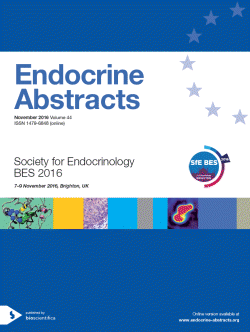Searchable abstracts of presentations at key conferences in endocrinology

Society for Endocrinology BES 2016
Brighton,
UK
07 Nov 2016 - 09 Nov 2016

07 Nov 2016 to 09 Nov 2016
Brighton, UK
Further information



